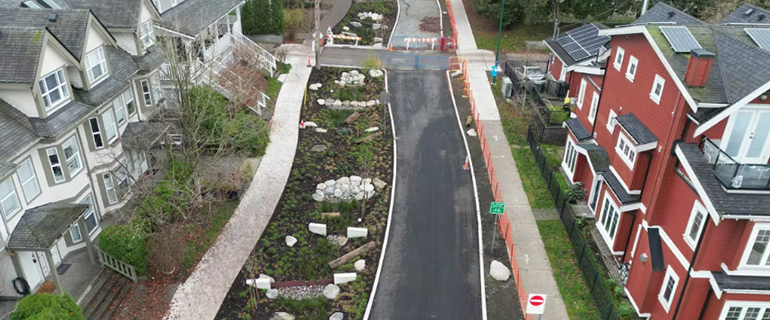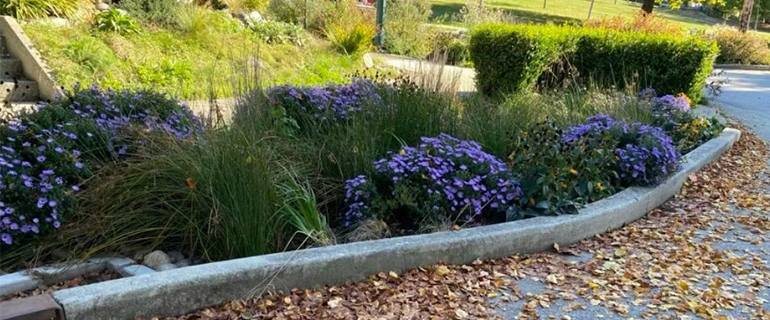A $6.2 million natural infrastructure streetscape project in Vancouver is bringing attention to the role of bioswales and green infrastructure for the future of sustainable urban development. The focus of an April CBC News article, Vancouver’s St. George Rainway project, which initially raised concerns from residents over its cost amid other budgetary pressures (most notably the national housing crisis), represents a strategic move to support higher-density housing and manage the growing strain on aging sewer infrastructure.
At the center of the project is a bioswale - a landscaped decompression designed to capture, filter, and store stormwater runoff. This nature-based solution, which honors one of the city’s historic streams, is capable of diverting and cleaning approximately 17,000 cubic metres of rainwater annually, which helps reduce the risk of sewer overflows and urban flooding. According to Robb Lukes, associate director of Vancouver’s Green Infrastructure Implementation Branch, although the bioswale cost about $1.6 million, it saved the city an estimated $16 million in avoided sewer upgrades for the flood-prone neighborhood.

Aerial Image of St. George Rainway. Image Source: City of Vancouver via CBC News
Not only do bioswales reduce pressure on the city’s sewer system, but they also offer a range of additional ecological benefits: filtering pollutants, supporting native plants and wildlife, and helping to reduce the urban heat island effect - not to mention they make city streetscape more green and beautiful. The St. George Rainway is exemplary of this, showcasing an array of native flowers, shrubs, grasses, and trees. Vancouver launched its Green Infrastructure Implementation Branch in 2017, and now adds about 30 to 40 new green installations annually, which include the installation like the St. George Rainway, adding bioswales, tree trenches, and permeable paving across the city.
These nature-based solutions are increasingly essential in cities like Vancouver, that face both extreme rainfall as a result of climate changes and the need for higher housing density. The article points out that many other Canadian cities, such as Montreal and Toronto, are also spearheading similar large-scale green infrastructure and climate resilience initiatives. Although there are certain maintenance and coordination considerations resulting from these green infrastructure installations, when implemented successfully, they can increase climate resilience, improve public health, and enhance urban living.
Written by Sabrina Careri, for Ann Dale.

'Bioretention corner bulge' St. George Rainway. Image Source: City of Vancouver via CBC News